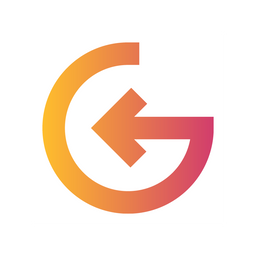Segmentation is a critical, foundational part of any marketing strategy. But not all segmentation methods work for all businesses.
If your customers are other businesses, rather than consumers, there are several key need-to-knows that’ll help you avoid pitfalls, create more actionable segments, and boost the results of your campaigns.
In this article, we cover:
- What B2B market segmentation is.
- Some key differences versus B2C segmentation.
- Why it’s important for businesses.
- Five B2B segmentation methods.
- A six-step guide to segmenting your B2B market.
What is market segmentation in B2B?
Segmentation has you divide your total target market into smaller segments with shared characteristics.
Why do this? The assumption is that different market participants have different needs. While your service can solve multiple problems, you make your marketing efforts more effective when you speak to what prospects care most about.
Plus, while many businesses could benefit from your products or services, you can’t market to all of them. And even if you could, you wouldn’t want to. You’ve got a select few prospects that represent your highest probability, greatest ROI (return on investment) opportunities. Naturally, you want to find them and spend your marketing budget on them.
How B2B and B2C market segmentation differ
B2C segmentation focuses on marketing to individual consumers – people like you and me. B2B is focused on marketing to businesses. The differences between B2B and B2C market segmentation are a result of the normal differences between consumers’ and businesses’ buyer behavior.
We’ve outlined five of the most impactful:
Businesses don’t impulse buy
Consumers impulse buy. Businesses don’t.
If you’re marketing to consumers, you can build this impulse buying phenomenon into your strategy. Not so with B2B. When businesses are your customers, the decision-making process is longer and more complex.
Why don’t businesses impulse buy? Usually, there’s more than one decision maker in a business. The person with the keys to the credit card is rarely the one who’ll be benefiting from your service in their daily line of duty.
In other words, when marketing to businesses, you have to convince more than one person you’re right for them.
B2B services can be more complex
The services you’re selling in B2B might be more complex. You might have multiple solutions, and might need to educate your prospects on the right one for them. The customer courting process is longer, which means there’s more room for error.
There’s more money at stake
There’s usually more at risk in B2B marketing, too. Winning a new enterprise account could mean landing thousands more users overnight. If your product works and helps the enterprise out, they could make a lot more money. If it doesn’t, they could be locked into an expensive contract for years and lose money on the deal, which makes them a more cautious buyer.
It’s trickier to strike the right balance
Since you’re dealing with multiple decision makers, it’s more difficult (though not impossible) to pinpoint a single “personality” or “persona” that you can speak to in your messaging. Plus, over-optimizing your messaging for the decision maker might make end-users very unenthusiastic about your product (and vice versa).
Why is customer segmentation important in B2B business?
There are a few points that can help you understand the importance of B2B customer segmentation.
First, it helps you find the best opportunities.
When you market your services to low probability prospects, you’re wasting resources for no reason. It’s completely avoidable.
B2B market segmentation is the process that ensures you’ve identified, and are marketing to, the prospects that represent your best opportunities.
Second, it boosts campaign performance.
You can precisely define subsections (segments) of your highest-probability prospects, and craft unique advertising campaigns for each. Thisboosts performance at all stages of your campaign, from email open rates, to on-page engagement rates, to overall conversion rates. When you scale these small improvements across all your prospects over time, your revenue explodes.
Third, you can track your data better.
When you’re able to track more data points across your segments, including conversion rates, you’ll develop a deeper understanding of your segments over time. From there, you can use your improved understanding to refine your segments for further improvements. You’ll also learn which segments are most valuable to you, so you can more efficiently allocate resources.
Other aspects of B2B segmentation that make it important for businesses include:
- It helps keep your marketing costs low;
- It informs product development via feedback & deeper understanding of audience & users;
- It can help you identify market opportunities in underserved segments.

Types of B2B market segmentation
Moving from your entire relevant market, aka your Total Addressable Market (TAM), to a workable list of high probability prospects is a multistep process. You’ll first identify ideal targets by segmenting your TAM.
In B2B marketing, you’ve got a few segmentation methods to choose from:
Firmographic segmentation
Firmographics are, essentially, the business equivalent of “demographics” for consumers. They include aspects like:
- Company size.
- The industry they’re a part of.
- Annual revenue.
- Business maturity.
- Length of sales cycle.
As is the case with B2C, segmentation methods exist on a kind of continuum. At one end is all the data that’s easy and inexpensive to get hold of. Unfortunately, since it’s the most accessible, such data don’t offer much of a competitive advantage.
Technographic segmentation
Technographic segmentation has you segment businesses based on the tech they use.
Why would you want to do that?
Well, if you’re a SaaS company, or offer a tech product of any kind, breaking your TAM up based on the tech they already use is a great help. You’ll be able to quickly figure out whether there’s room in their tech stack for your product.
What’s more, the makeup of a business’ tech stack can tell you a lot about its maturity. Even if you can’t figure out what stage of growth a business is at, you might be able to find out what’s in its tech stack. From there, you stand a chance at figuring out whether that business is ready for your product, or if that ship has sailed.
Needs-based segmentation
With technographic segmentation, we mentioned you’d find out what tech a business was using, and use that to determine whether they might need your product now or in the future.
Needs-based segmentation follows a similar reasoning approach. Rather than with data on their tech stack alone, you’d look at all the data you can find about a business to determine the kinds of solutions it might need – now or in the future.
For example, you might determine that businesses only start looking for products like yours once they cross the mark of 1,000 employees. It’d make sense in this situation to market only to companies with more than 1,000 employees.
Behavioral segmentation
Behavioral segmentation in B2B marketing is almost exactly the same as in B2C. This time, rather than looking at the buying behavior of the consumer, you’re looking at the buying behavior of the businesses you’re targeting.
This is powerful, it helps you understand the conditions necessary for members of your target market to buy, for one. For two, it’ll help you find triggers for buying behavior.
For example, businesses in your sector might do a lot of buying right at the beginning of the financial year. This might tie into other data you’ve got, for example, if your sales team’s win rate is far higher in the three months immediately following the start of the new financial year.
Such information can inform your marketing strategy, as you can ramp up your marketing efforts during these higher probability months of the year to win more deals.
Buyer journey stage
As with B2C marketing, the stage of the buyer journey the businesses you’re targeting are at can make a big difference to the success of your campaigns.
When your prospects are at a more advanced stage of awareness, different types of marketing material will be more effective than if they’re barely aware there’s a problem they should be looking to solve.
This latter type of business won’t be ready for a pitch, and educational materials would make more sense. But a business that’s already looking for a solution like yours is ready to have their trust in your brand built, and to learn what makes your product stand out.
B2B market segmentation best practices
Ok, so you’re aware of what B2B market segmentation is, how it differs from B2C customer segmentation, why it’s important, and some of the best methods for conducting it.
Let’s go through some best practices in B2B segmentation that’ll help you avoid common pitfalls.
Use clean data to inform your segmentation strategy
Needless to say, if the data you collect isn’t accurate, the conclusions you draw will be all wrong.
...when you can’t find an independent source to back something up, build a margin of error into your segmentation strategy.
But making sure your data is solid is a tricky process.
It pays to not rely entirely on any one source for any of your data. Corroborate all your findings and, when you can’t find an independent source to back something up, build a margin of error into your segmentation strategy.
Create distinct and actionable segments
A common mistake is to create segments that are too similar. If your segments all overlap, you don’t really have segments. You’ve still got one big group of customers.
As the name suggests, segments should be discrete. They should also be defined by their differences. This is what makes them useful.
While it’s possible a business in one segment might occasionally also fall into another, your segments will be most effective when they deal with separate sets of customers.
Not only should your segments be different enough, but they should be actionable, too. Segments become actionable the minute you prioritize them by business value. That is, so long as you have a way of communicating specifically with the members of that segment.
When you’re able to identify why segments A and B are worth less to your business than segment C, you can start marketing directly to segment C for greatest ROI.
Tailor your value propositions to each segment
As we mentioned, what makes your segments unique is what makes them useful. So use those differences!
Each segment will have different needs and different ways of viewing the world your product is a part of. Reframe your product for each of your segments to make sure they’re seeing you in the light you want them to see you in.
You can go incredibly deep with this, tweaking your messaging, imagery, positioning, and all kinds of other aspects of your marketing strategy once you’ve built out viable segments.
Ok – now let’s put all this together and build some segments.
Segment your B2B market in 6 steps
Here are the six steps to segmenting your market:
- Understand your target market.
- Define your market segments.
- Develop buyer personas.
- Create targeted messaging.
- Choose the right marketing channels.
- Measure and optimize your campaigns.
Step 1: Understand your target market
First up, you’ve got to understand your target market.
Before you can carve a statue, you need to get your hands on a block of marble. In the same way, you need to be able to visualize the entire pool of customers that could benefit from your product before you can build your segments.
That block of marble is your total addressable market (TAM), which we mentioned earlier.
Hopefully, you haven't built a product without knowing there’s a market for it. But there’s always a stage where you’re trying to align your vision with what the market wants relative to what’s already out there.
So, if you’re struggling to understand who your target market is, try sending out free samples or trials of your product. Compensate testers for their time, and ask for feedback on their experience with your product. Collect the details of those who like it and who say they’d use it; they represent your target audience.
Step 2: Define your market segments
Once you know your total addressable market, it’s time to start grouping. Use the methods we mentioned above to break your market (that block of marble) up into workable sections. Whether you combine various methods of segmentation to build your segments, or use just one, is up to you.
As we discussed earlier, your segments will be defined by their shared characteristics. What makes each segment unique from the rest is what makes it useful, so don’t be tempted to make the differences subtle, or the lines between segments blur.
With segments defined, identify the ones that represent the greatest opportunities for your business and prioritize them.
Step 3: Develop buyer personas
With a prioritized list of market segments in-hand, it’s time to develop your B2B buyer personas.
Buyer personas add an air of personalization to your marketing communications from here on out. They allow you to interact with the decision-makers in the businesses that make up the members of your segments in as human a way as possible.

Step 4: Choose targeted messaging
With buyer personas for each of your priority segments, you’re ready to start drawing up what your messaging will look like for each persona. It’s important your messaging is personalized and targeted so it can have the greatest possible impact.
If you’re to influence and persuade effectively, you’re going to have to earn the trust of those decision makers. By learning what makes them tick, and what drives their buying decisions, you’ll be well-placed to start framing your products in the best possible light, while earning that trust quickly and effectively.
Step 5: Choose the right marketing channels
As we mentioned earlier, one of the keys to having actionable market segments is to know you can communicate directly with the members of your priority segments.
That means choosing the right marketing channels.
As part of the process of developing your buyer personas, you’ll have figured out where your decision makers hang out, and on which platforms they’ll be most receptive to marketing communications.
Social media, YouTube, Google search results, and email are all great digital locations for your marketing communications. But trains, billboards, bus stops, television and movie commercials, magazines and newspapers… all of these are viable locations for your ads. You just have to pick the ones that make sense based on your research.
Step 6: Measure and optimize your campaigns
Finally, you’ll have to measure your campaigns.
Everyone knows it’s rare to knock it out of the park on your first try. If you learn from every at-bat you have, though, you’ll soon learn where you can make small improvements in your game.
Soon enough, home runs every time!
The same is true for your marketing campaigns. Solid data is hard to come by, so use the pre-validated data that comes in freely as a result of your marketing efforts to boost the results of future campaigns.






